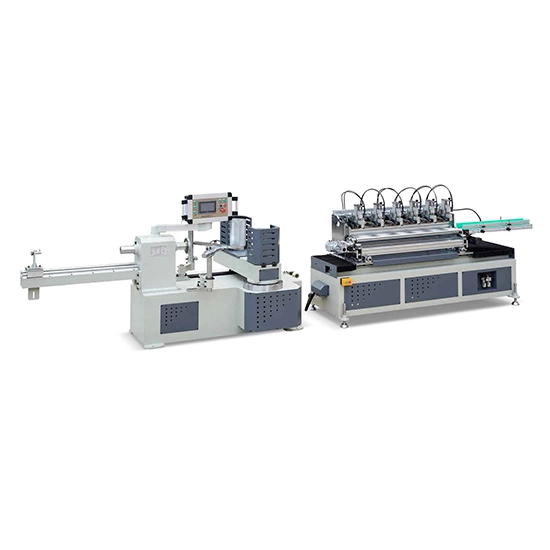en

Model: CFJG-20
Product Performance
Paper Layer: 10 Layers
Inner Diameter: 20-100mm
Wall Thickness: 0.5-5mm
Winding Speed: 1-30meters/min (relates to size and material quantity)
Winding Nose: Double-heads single belt
Length Fixing: By Encoder
Cutting Length: 100-1200mm
Cutting Way: Multi-blades (5 pieces)
The automatic paper tube making machine is a specialized piece of equipment designed to produce parallel paper tubes, commonly used in the packaging of small fireworks. This machine automates the production process, ensuring efficiency and precision in the manufacturing of paper tubes.
Contact Us| Model | CFJG-20 |
| Paper Layer | 10 Layers |
| Inner Diameter | 20-100mm |
| Wall Thickness | 0.5-5mm |
| Winding Speed | 1-30meters/min (relates to size and material quantity) |
| Winding Nose | Double-heads single belt |
| Length Fixing | By Encoder |
| Cutting Length | 100-1200mm |
| Cutting Way | Multi-blades (5 pieces) |
High Efficiency: Fully automatic paper tube making machines are designed for high-speed production, offering rapid processing of paper tubes with minimal downtime. They can produce a large volume of paper tubes within a short period, maximizing productivity.
Precision Engineering: The paper pipe making machine incorporates precision engineering and advanced technology to ensure accurate and consistent production of paper tubes. They are equipped with servo motors, PLC controls, and sensors to maintain precise tube dimensions and quality.
Versatility: Fully automatic paper tube making machines are versatile and can produce a wide range of tube sizes and configurations. They can accommodate various paper grades, thicknesses, and diameters to meet diverse customer requirements.
Automatic Operation: As the name suggests, these machines operate fully automatically, requiring minimal manual intervention. They feature automated feeding, cutting, gluing, winding, and finishing processes, reducing labor costs and improving operational efficiency.
Raw Material Feeding: The process begins with the feeding of raw materials into the machine. Rolls of paperboard, specifically designed for spiral winding, are loaded onto the machine's feeding mechanism.
Spiral Winding: The paperboard is unwound and fed into the machine, where it undergoes spiral winding around a mandrel. This winding process forms the basic structure of the paper tube, with layers of paperboard wrapping around the mandrel to create the desired diameter and length of the tube.
Gluing and Bonding: As the paperboard is wound around the mandrel, adhesive is applied to the overlapping edges of the paperboard layers. This adhesive ensures that the layers bond together securely, forming a tight and stable paper tube.
Cutting and Shaping: Once the spiral winding is complete, the paper tube undergoes cutting and shaping processes. The paper pipe machine is equipped with cutting mechanisms that precisely trim the paper tube to the desired length and shape, ensuring uniformity and consistency in the final product.
Drying and Curing: After cutting and shaping, the paper tubes may undergo a drying and curing process to ensure that the adhesive is fully set and the tubes are ready for use. This may involve passing the tubes through a drying tunnel or exposing them to heat to accelerate the curing process.
Quality Control: Throughout the production process, the paper core machine may incorporate sensors or inspection systems to monitor the quality of the paper tubes. This includes detecting any defects such as uneven winding or improper bonding and rejecting defective tubes from the production line.
Packaging and Discharge: Once the paper tubes are deemed to meet quality standards, they are automatically packaged and discharged from the machine. Packaging may involve bundling the tubes into groups or inserting them into containers for distribution and sale.